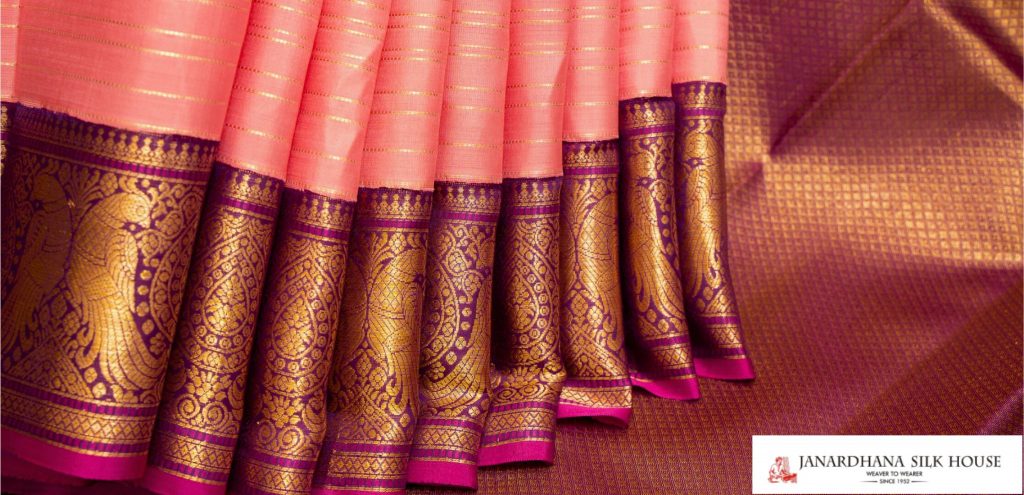Introduction to handloom cotton sarees
Handloom cotton sarees are a timeless and elegant choice for women who appreciate the beauty and craftsmanship of traditional Indian textiles. These sarees are handwoven using pure cotton threads, resulting in lightweight and breathable fabrics that are perfect for daily wear, formal occasions, and even festive celebrations. In this ultimate guide, we will explore the history and significance of handloom cotton sarees, discuss the different types available, provide valuable tips on choosing the perfect saree for you, and offer insights on identifying authentic handloom cotton sarees.

History and significance of handloom cotton sarees
Handloom cotton sarees have a rich cultural heritage that dates back centuries. The art of handloom weaving has been passed down through generations, with skilled artisans dedicating their lives to perfecting this craft. These sarees hold immense significance in Indian culture and are often associated with grace, femininity, and tradition. They are not only a symbol of cultural identity but also a testament to the skill and artistry of the weavers who create them.
Different types of handloom cotton sarees
There is a wide variety of handloom cotton sarees available, each with its unique style, weaving technique, and regional influence. Some of the most popular types include:
Kanjivaram Cotton Sarees: Known for their vibrant colors, intricate zari work, and rich silk-like texture, Kanjivaram cotton sarees are a luxurious choice. They originate from Tamil Nadu and are highly coveted for their exquisite craftsmanship.
Chanderi Cotton Sarees: Chanderi cotton sarees, hailing from Madhya Pradesh, are known for their sheer texture and lightweight feel. They often feature delicate motifs and gold or silver zari borders, making them perfect for both casual and formal occasions.
Tant Cotton Sarees: Originating from West Bengal, Tant cotton sarees are known for their simplicity and comfort. They are typically characterized by wide borders and elegant pallus, making them a popular choice for daily wear.
Maheshwari Cotton Sarees: Maheshwari cotton sarees, from Madhya Pradesh, are renowned for their unique blend of cotton and silk. They feature striking patterns and vibrant colors, making them a favorite among saree enthusiasts.
Factors to consider when choosing a handloom cotton saree
When selecting a handloom cotton saree, there are several factors to consider to ensure you find the perfect one for you:
Occasion: Determine whether you need a saree for a casual event, a formal occasion, or a festive celebration. Different sarees are suitable for different settings, so it’s important to choose accordingly.
Weave: Pay attention to the weaving technique used. Handloom sarees have different types of weaves, such as Jamdani, Ikat, and Bandhani. Each weave has its distinct characteristics and appeal, so choose one that resonates with your personal style.
Colour and Design: Consider your skin tone and personal preferences when it comes to colors. Handloom cotton sarees come in a plethora of hues, from vibrant and bold to pastel and muted. Similarly, there are various designs and patterns to choose from, including floral motifs, geometric prints, and traditional motifs.
Comfort and Maintenance: Handloom cotton sarees are known for their comfort and breathability. Ensure that the saree you choose is lightweight and easy to drape. Additionally, consider the maintenance required for the saree, as some may require special care.
How to identify authentic handloom cotton sarees
With the rise in demand for handloom cotton sarees, it has become crucial to be able to identify authentic pieces. Here are a few tips to help you determine the authenticity of a handloom cotton saree:
Weaving Technique: Pay attention to the weave of the saree. Authentic handloom sarees have distinct weaving techniques that are often unique to specific regions or communities. Familiarize yourself with these techniques to spot the genuine ones.
Quality of Fabric: Genuine handloom cotton sarees are made from high-quality cotton threads. The fabric should feel soft, lightweight, and have a natural sheen. Avoid sarees that feel stiff or rough, as they may be machine-made imitations.
Finishing and Detailing: Examine the saree closely for fine detailing and finishing touches. Handloom sarees often have intricate borders, well-defined motifs, and neatly woven pallus. Sloppy or uneven workmanship may indicate a counterfeit product.
Authenticity Labels and Certifications: Look for authenticity labels or certifications that are often provided by government bodies or reputable organizations. These labels ensure that the saree has been handwoven by skilled artisans and meets certain quality standards.